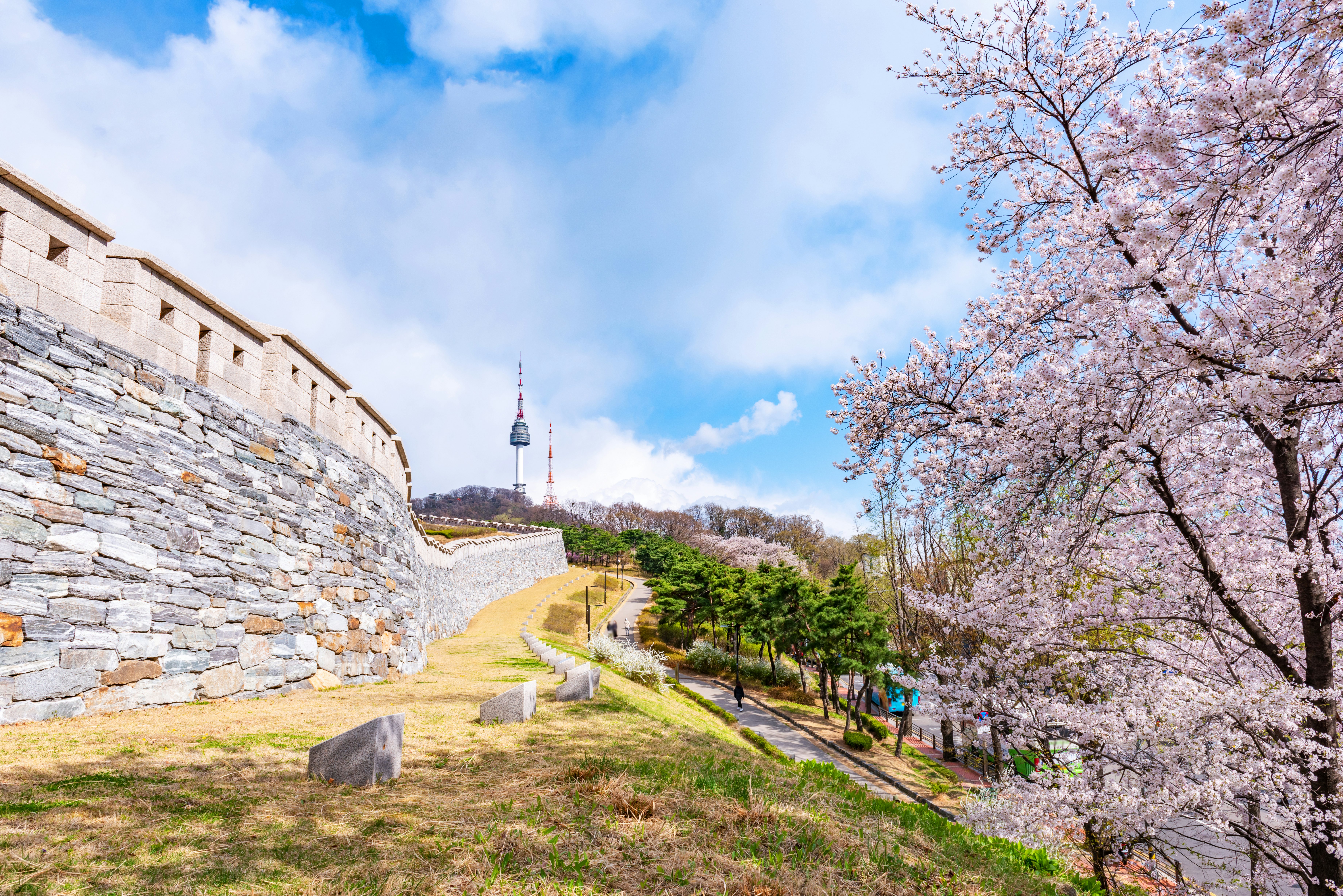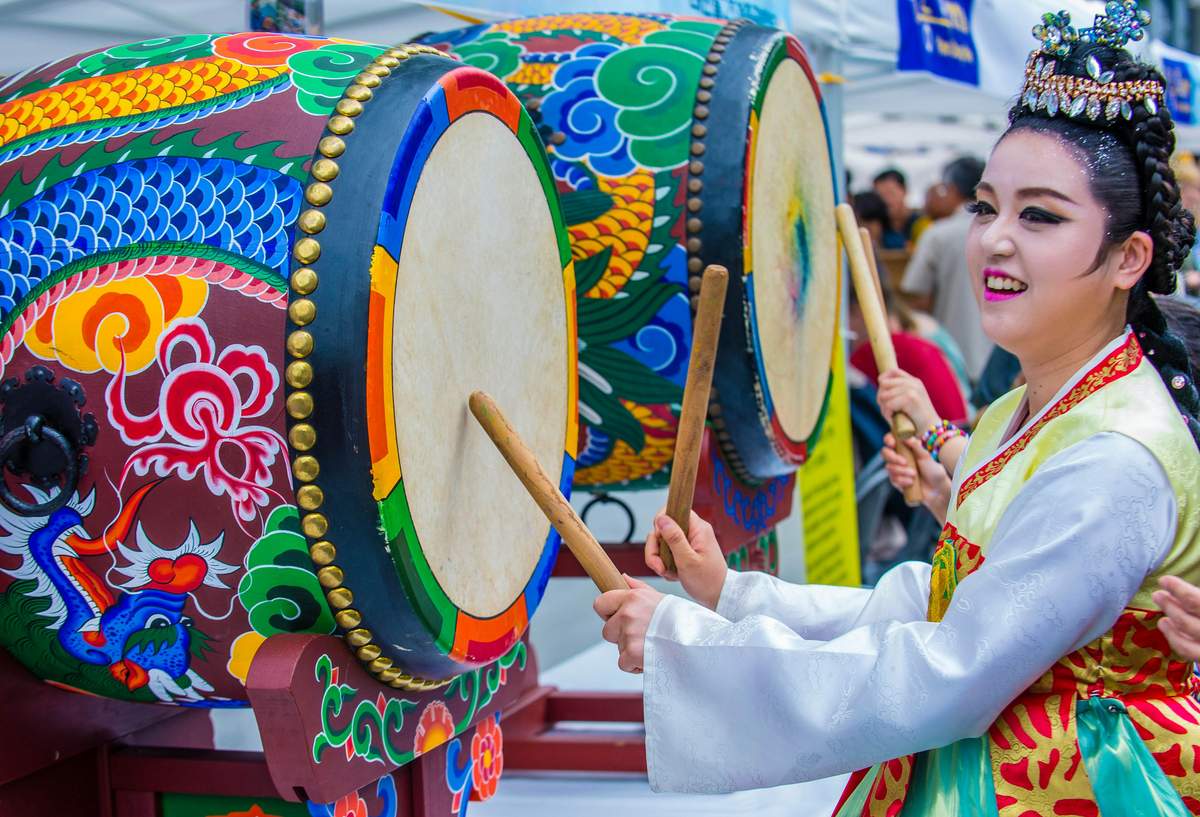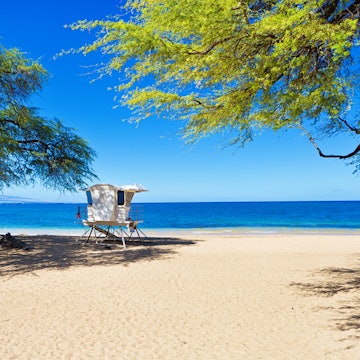

Seoul's Changgyeonggung grand palace in fall. sayan uranan/Shutterstock
With a temperate continental climate, Seoul is known for its biting winters and blistering summers. In between are the long-awaited but all-too-fleeting pockets of perfectly enjoyable weather, perhaps the best moments to visit. Even so, every season in South Korea’s capital – with its exciting calendar of events – offers something worth traveling for, which might make for a difficult decision when it comes to planning your trip.
Customarily, summer brings the most international visitors to Seoul, further congesting an already packed city. Yet in recent years, spring and fall – with fetching foliage and ideal weather – have caught on as in-demand times to visit, too.
To help you make your own plans, here’s our seasonal guide to the best times to visit Seoul.

Go in the spring – March to May – for cherry blossoms and picnics
Unquestionably the most agreeable seasons in Seoul, spring and fall are also the best times to soak up the city’s great outdoors, from the natural wonders of its national and city parks to the back-alley treasures of its traditional villages, temples, markets and street-food stalls. A prized spot, the Han River is where visitors can paddle around on swan boats or have a chimaek picnic of fried chicken and beer (chimaek is a slang portmanteau that combines “chicken” with the Korean word for beer, maekju).
Every March, the Seoul Marathon welcomes some 35,000 runners, from expert to amateur. Unlike some other races, anyone who signs up ahead of time is qualified to participate. April arguably presents Seoul’s loveliest face, when spring bursts forth in a palette of pinks and whites and the cherry blossom trees bloom in cotton-candy swirls. Two favorite viewing spots are Yeouido Park and Namsan Park, where spectators stroll down petal-lined paths and picnic beneath flowering canopies.

Join in at local events in the fall months of September to November
Fall heralds the arrival of favorite annual traditions. South Korea’s fall harvest holiday, Chuseok, generally takes place in September: get into the harvest spirit by observing the ceremonial ritual of Sajik Daeje, a 50-minute procession that winds its way through the city near Gyeongbokgung station, paying homage to the ancient gods of earth and grain.
The crisp, dry weather continues through November and the temperature drops considerably, making this month a less expensive time to visit than September and October. The most notable happening this month might be the Seoul Lantern Festival, which sets Cheong-gye-cheon ablaze with paper lanterns and LED sculptures.

Visit indoor attractions during the humid summer months of June to August
While June can be pleasant, July and August bring unbearable heat and humidity, along with heavy rains that can last all day. Luckily, Seoul has plenty of things to do for keeping dry and cool inside. Go museum or gallery hopping, experience South Korea’s quirky cafe culture or get lost in Asia’s largest underground shopping mall, COEX, where after you’re through browsing you can enjoy an aquarium, library, movie theater and casino.
The winter in December to February is best for budget travelers
Despite its cold climate, with dry winds that wreak havoc on the skin and throat, Seoul is wondrous in the winter. The diminished crowds make the city feel smaller and more intimate, drawing into stark relief the sights, sounds and scents of everyday life. Think snow-dusted palaces, shopkeepers sweeping the flakes from their front stoops and roasted chestnuts and sweet potatoes perfuming the air. You can also stretch your budget further, as the cold winter months are the most affordable time to visit.
If you enjoy winter sports, venture out for a day of skiing, snowboarding or ice fishing. Seollal, the Korean New Year based on the lunar calendar, typically falls between late January and mid-February. In the lead-up to the holiday, be on the lookout for special celebrations and traditional performances at folk villages and palaces.
















